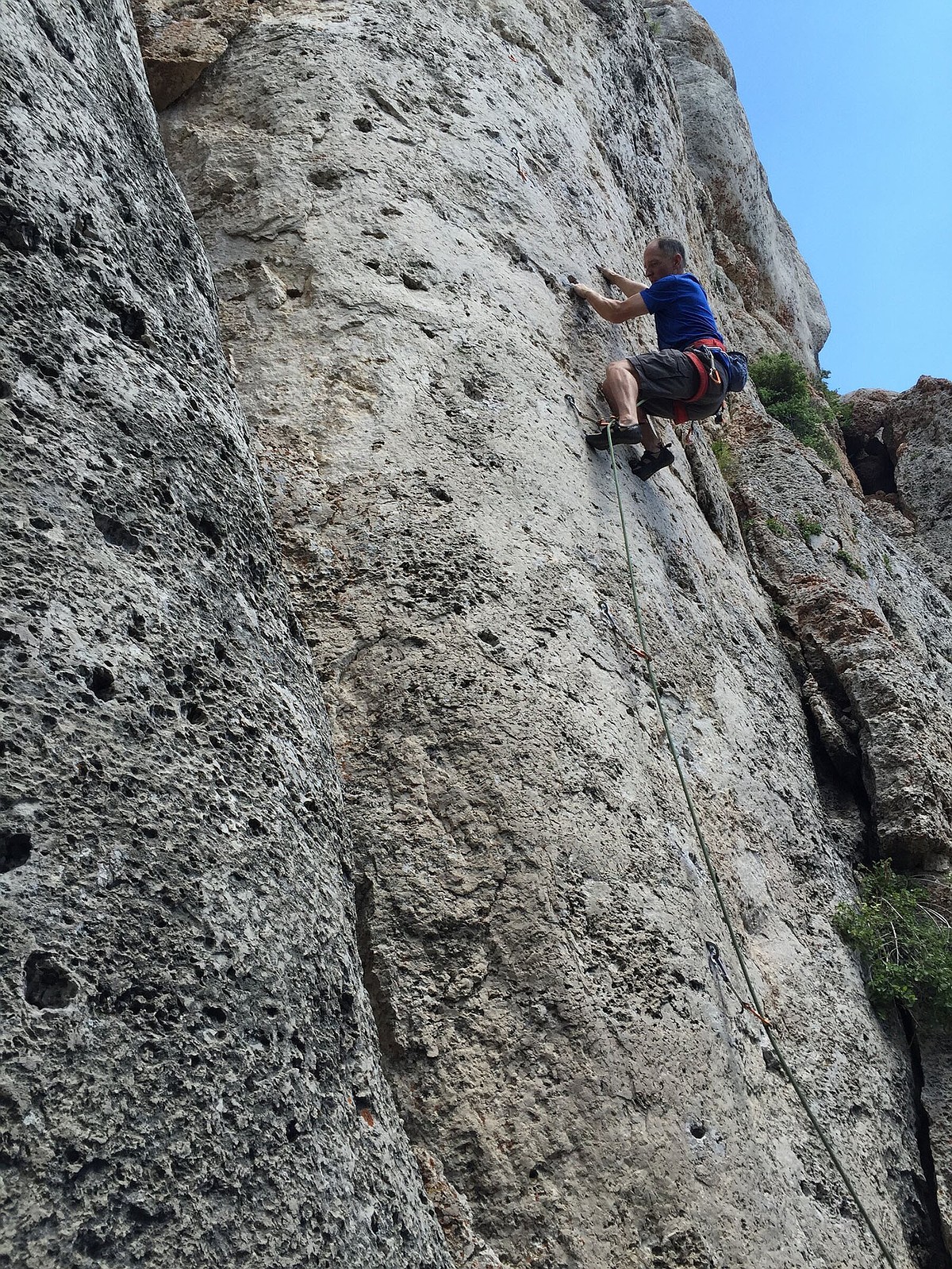Copyright Arkansas Online

Imagine a sport in which you fail 99% of the time. That's the world of rock climbing, but Brent Stipsky said that the 1% success justifies the futility. "Rock climbing is synonymous with failure, but it's metaphorical with life," Stipsky said. "It's all about controlling your mental state. Dealing with high-stress situations the way we do, you can do anything." A native of Baton Rouge, Stipsky began serious rock climbing in 1990. He became enamored with the sport at age 7 while watching a National Geographic special on television. "That was something that was so far away for a flatlander in Louisiana, and I immediately knew that was what I wanted to do for the rest of my life," Stipksy said. "It was not accessible where I lived, but when we moved to Arkansas, I found a little cliff that was not far from my house. I did a little boulder problem when I was 9, and I did another boulder problem when I was 10, and I was just hooked. I just tried to find rock everywhere I could find it, and I tried to climb it whenever I could." Risk is part of the allure, Stipsky said, but problem solving on an intense physical level is the main attraction. "Sometimes it leads you into some crazy situations," Stipsky said, "but it also led me into a lifetime of a love for the outdoors in a way I didn't think i could find." Rock climbing was a niche culture in 1990, Stipksy said. That community was very closely knit, but it grew as the Millennial Generation discovered it. Climbers like J.D. Borgeson of Little Rock and Jonathan Childs brought fresh enthusiasm and new ideas. Ironically, rock climbing is also a fountain of youth for some seniors. "This is not sport that's limited to youth," Childs said. "I've seen people start this sport at 70. They don't excel in a way that you think that they would, but they have so much fun. At the Little Rock Climbing Center, there's people that started in their 60s. They are the most fun. They're rebuying their youth. But yeah, when you see an 8-year old go up something that you'd never do, that really gets into your craw a little bit." Although rock climbing is increasingly popular nationally, Stipsky said that Arkansas is still relatively undiscovered. "You don't see a lot of people here," Stipsky said. "I had the privilege to explore a some of this state when it was still virgin territory. I got to develop a lot of stuff (climbing routes), and I've made lifelong friends doing this." Climbing rocks is a technical exercise that requires a level of precision attainable only through a perfect union of mind and body. The way a chess players always thinks several moves ahead, a climber is always thinking about the next foothold and the next handhold. Your weight must be evenly distributed to balance on your anchor points. Sometimes you realize you can't go farther. Sometimes you can climb back down. Other times the only solution is to let go and rely on your gear and your belaying partner to arrest your fall. "We spend 99% of our time failing on a lot of these things before we finally succeed," Stipsky said. "It goes into tenacity. You can get kicked off of something a lot, but you can find success if you keep trying. Sometimes it's just finding a different method. You can move your foot 1 millimeter, and that can be all the difference in actually doing a problem or failing on a problem." Fear is constant, Stipsky said, and fear adds to the stress of trying to solve a high-stakes problem. "But you can pull yourself together and concentrate your way through it," he said. "It really does applicate yourself well within your life because life really is about that. Every day that we come across something, it doesn't feel the same as it does when you're 10 feet above your last piece of protection, and you're pumping out. Your muscles want to give out. You give that one last extra effort on something, and you do something that kicked you off the last hundred times you tried it. "That's a unique thing for this sport, and it really does build a good base as far as mental stability and as far as dealing with everyday life." Getting started in rock climbing is easier than it was 30 years ago. As do most young climbers, Borgeson and Childs started out in climbing gyms. The routes in a gym vary in difficulty, but the environment is controlled. All you really need is a harness. "It helps to have rock climbing shoes and chalk," Stipsky said. "Later, you'll need a rope and a clip to clip rope in as you go up the rock." The state's most famous rock climbing destinations are in the Ozarks. Sam's Throne and Horseshoe Canyon Ranch in Newton County are historical destinations, but Stipsky said Mount Magazine is also a world-class destination. Surprisingly, Central Arkansas has popular destinations at Emerald Park and Big Rock Quarry. These are as important to climbers in Central Arkansas as the trails are to mountain bikers in Northwest Arkansas. "In the last five years, climbing in Central Arkansas has absolutely exploded," Borgerson said. "Pinnacle Mountain and West (Highway) 10 have some old-school climbing. When Rattlesnake Ridge became public, that added 40 or 50 routes. There are over 100 routes at North Little Rock." Traditional routes have some names that are too racy for publication. They have become a lot tamer as climbing has become more mainstream. Stipsky said that was inevitable, but he laments the sanitization of the sport as it has gentrified. Stipsky said he was mentioned in a trailblazing book that is no longer for sale at Arkansas State Park visitor's centers. "My mom wanted to buy the one at Mount Magazine because I was in it," Stipksy said, laughing. "They wouldn't sell it to her because the names in it were so profane." Regardless, mainstream participation ultimately leads to more and greater opportunities. Sanitizing the vernacular is a reasonable compromise for growing the sport.



